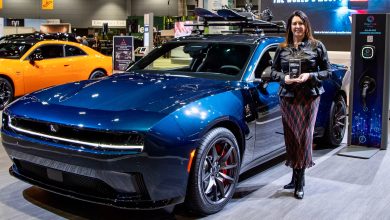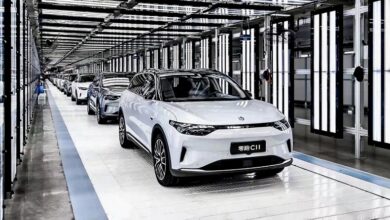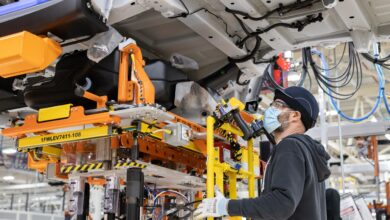Stellantis Could Adopt ICE Or HEV Powertrains In Its EVs
CFO Natalie Knight Says Automaker Has The "Flexibility" To Meet Consumer Demand...

Stellantis is navigating the rapidly evolving electric vehicle (EV) market with a flexible approach. The company is contemplating the integration of internal combustion engine (ICE) or hybrid electric vehicle (HEV) technology into its battery electric vehicle (BEV) lineup, should consumer demand dictate such a move.
During a recent presentation discussing the company’s Q1 2024 results, Stellantis Chief Financial Officer Natalie Knight emphasized the need to remain agile in response to changing consumer preferences. “Our goal is to put ourselves in the position where, on the one hand, we can show the market that we know where things are moving and we’re committed very much to the EV market but, on the other hand, we have the flexibility to go and grow where the consumer demand is,” Knight stated.

This adaptable strategy underscores Stellantis’s commitment to staying closely attuned to its customers. Knight further stated, “So, the majority of our products are either ICE vehicles or intended to utilize those multi-energy platforms that we have. This is a great opportunity for us, compared to our peers, having the multi-energy platforms for all of our products in development and having the agility to move between them.”
Stellantis’s approach involves initially introducing electric variants of new models while leaving room to incorporate ICE or HEV powertrains later based on market demand.
Antonio Filosa, CEO of the Jeep® brand, echoed this sentiment, indicating a readiness to explore hybrid options for certain models. The Wagoneer S, Filosa said, “will stay BEV only, for sure. But, being faithful to our main strategy of deep electrification, we can think about opportunities on Recon.” Filosa said an ICE-only Recon was “unlikely.”

Stellantis’s multi-energy platform facilitates the seamless integration of different powertrain options across its vehicle lineup, allowing the company to respond swiftly to market dynamics while effectively meeting consumer demand.
As Stellantis aims for its North American goals by 2030, achieving a 50% EV target seems challenging given current market trends steering away from BEVs. Nonetheless, Stellantis remains committed to adaptability and consumer-centric innovation.
Source: WardsAuto






2 replies
Loading new replies...
Join the full discussion at the Mopar Insiders Forum →